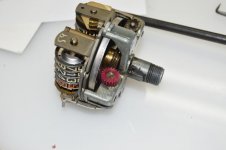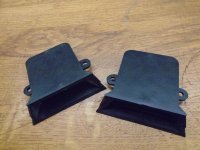martx-5
Yoda
Offline
My son got a 3D printer about a month ago, and have had him make me a few things, but yesterday, I had him make something for the TR3. One of the fiber odometer gears packed it in awhile ago, so I thought that we should be able to make one. I used the TinkerCad free program that actually has six different gear shapers, one of them pretty complex that can do helix's and bevels. We actually made a helix gear for a small gear motor I have that had a stripped fiber gear. Anyway, the gear for the odometer took a couple of tries to get on the money, but it works just fine. I had to make it about 1mm higher that the original, but only because it seemed to print the profile better.
These are more than just toys, they can actually produce useful stuff.

These are more than just toys, they can actually produce useful stuff.


 Hi Guest!
Hi Guest!

 smilie in place of the real @
smilie in place of the real @
 Pretty Please - add it to our Events forum(s) and add to the calendar! >>
Pretty Please - add it to our Events forum(s) and add to the calendar! >> 


